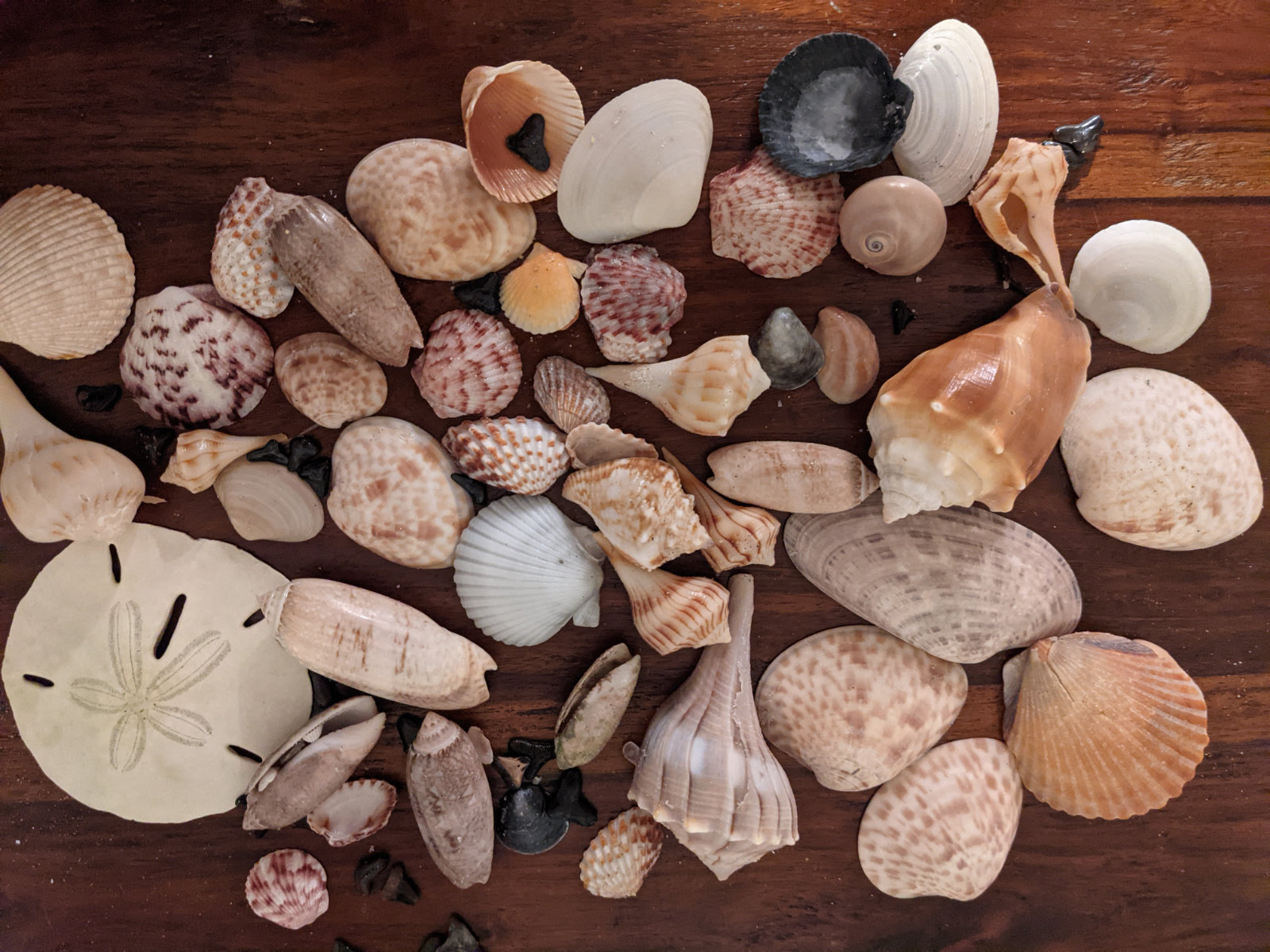Seashell collecting on Florida beaches is a favorite pastime of locals and tourists. Learn about some of the shells you may find.
When you go to beaches in Florida, then you may want to collect seashells. The best time is after a high tide, after a storm, and during the winter months. Try going seashell collecting in the early morning before other people arrive at the beaches.
What Are Some Types of Seashells Found on Florida Beaches?
You are likely to see many types of seashells on Florida beaches.
Conch shells
It is illegal to process queen conch shells in Florida if the animal is still alive. Shells containing live animals will be brighter orange than other conch shells.
Florida’s state shell is the horse conch shell, and they can be up to 24-inches long.
Native American tribes used to collect these shells and fashion them into various tools.
Junonia Shells
Each Junonia shell once housed a marine gastropod mollusk. When the mollusk dies, it detaches itself from its shell, which then washes ashore.
These creamy white shells with brown dots are small, with most measuring between 4-and 6-inches long. The longest one ever found was about 6-inches long.
These spindle-shaped shells have rigid whorls that swirl until they reach a point.
Lightning Whelk Shells
Lightning whelk shells are off-white to gray with a white interior. These shells that can be between 2.5-and-16-inches long have brown lightning-like streaks on them.
When you look at them, you will notice that they have a left-handed swirl. Many Native American tribes believed this made them sacred. Yet, they used them for many purposes, including scrapers, gouges, cups, and bowls.
Cockle Shells
It is not unusual to find cockle shells as big as your hand. Yet, it can be rare to find the perfect one, which must be symmetrical and have evenly spaced raised ribs emanating from a single point.
These shells consist of two halves that can close completely. It is common to find them on Florida’s beaches because they live very close to the shoreline.
Remember that it is illegal to collect seashells containing live animals in the state.
Tulip Banded Shells
Beachgoers often find at least two types of tulip-banded shells in Florida.
The first type of these spindle-style shells is usually less than 4-inches long. They are generally ivory or bluish-gray with streaks of reddish-brown. This type of shell has raised bands.
The true tulip banded shell has seven distinct brown bands on its body. This shell has smooth whorls between the bands. The true tulip banded shell can be up to 10-inches long.
Regardless of which type you find when shell collecting in Florida, it was once the home of a black snail. When threatened, they could go into their shell and completely shut the shell.
Murex Shells
There are many different types of murex shells. Most have frondose spines, webbed wings, lacy frills, or knobby whorls. These shells that come in a variety of sizes are very fragile.
Apple murex shells are commonly found in Florida. They are usually brown and have white markings. This shell is generally thicker than many other murex shells found worldwide.
See these shells and others in this YouTube video.

